How Much Does It Cost to Replace a Tile Roof on a 1,500 Square Foot House?
Replacing a tile roof on a 1,500-square-foot house typically costs between $37,125 and $74,250, averaging $25 to $50 per square foot. This estimate includes materials, labor, removal of the old roof, and necessary permits. Costs vary based on the type and quality of tile, the complexity of the roof design, and local labor rates. High-end tiles and intricate installations can increase the total cost. Additional expenses may arise from structural repairs, insulation, and underlayment. Investing in quality tiles ensures durability, weather resistance, and an attractive finish, enhancing your home’s value and longevity. Proper planning and budgeting are essential for optimal results.
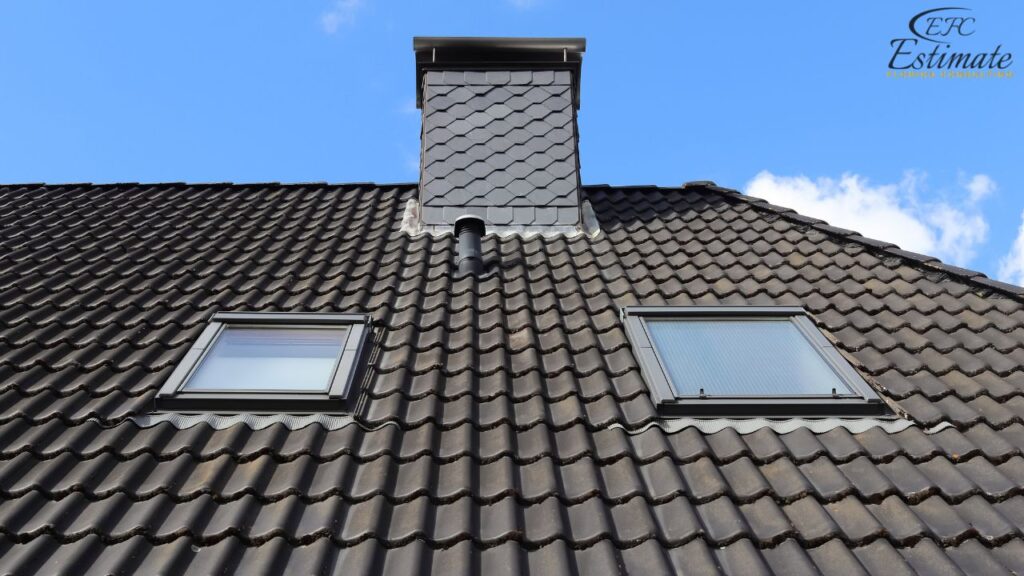
Cost Breakdown for Replacing a Tile Roof on a 1,500 Square Foot House
Materials
The cost of roofing materials varies based on the type of tile chosen. Here’s an estimate of the material costs for different types of tiles:
Tile Type | Cost per Square Foot (in dollars) | Total Cost for 1,500 Sq Ft (in dollars) |
Clay Tiles | $8 – $15 | $12,000 – $22,500 |
Concrete Tiles | $6 – $12 | $9,000 – $18,000 |
Slate Tiles | $15 – $30 | $22,500 – $45,000 |
Materials costs include the tiles themselves, as well as any additional materials needed for installation, such as fasteners and sealants. Choosing high-quality materials can improve the roof’s durability and appearance, providing long-term value for the investment. It’s important to select materials that are suitable for the local climate and that complement the home’s architectural style. The choice of materials can also impact the overall aesthetic of the home, enhancing curb appeal and potentially increasing property value.
Labor
Labor costs for replacing a tile roof can vary significantly. Here’s an estimate of labor costs:
Labor Task | Cost per Square Foot (in dollars) | Total Cost for 1,500 Sq Ft (in dollars) |
Removal of Old Roof | $1.50 – $3.00 | $2,250 – $4,500 |
Roof Deck Preparation | $1.00 – $2.00 | $1,500 – $3,000 |
Tile Installation | $4.00 – $8.00 | $6,000 – $12,000 |
Labor costs cover the entire process from removing the old roof to installing the new tiles and finishing the job. Hiring experienced and reputable contractors ensures the roof is installed correctly, reducing the risk of future issues and providing peace of mind. Proper labor practices include ensuring all safety measures are in place, and the job site is maintained properly throughout the project. Skilled labor also ensures that the project is completed efficiently and to high standards, minimizing disruptions to the household.
Additional Costs
Additional costs can include underlayment, flashing, ridge caps, and ventilation systems. Here’s an estimate of these additional costs:
Additional Component | Cost per Square Foot (in dollars) | Total Cost for 1,500 Sq Ft (in dollars) |
Underlayment | $0.50 – $1.00 | $750 – $1,500 |
Flashing | $0.75 – $1.50 | $1,125 – $2,250 |
Ridge Caps | $1.00 – $2.00 | $1,500 – $3,000 |
Ventilation Systems | $1.00 – $2.00 | $1,500 – $3,000 |
These additional components are essential for the overall performance and longevity of the roof. Proper installation of underlayment and flashing ensures the roof is waterproof and resistant to leaks. Ridge caps and ventilation systems enhance the roof’s functionality and help regulate temperature and moisture levels. Including these elements ensures that the roof system performs optimally and provides the best protection for the home. These additional features also contribute to the overall energy efficiency and comfort of the home.
Factors Influencing the Cost of Tile Roof Replacement
Roof Size and Complexity
The size of the roof is a primary factor influencing the cost of replacement. For a 1,500 square foot house, the actual roof area may be larger due to the slope and pitch of the roof. Complex roof designs with multiple angles, dormers, and valleys will require more labor and materials, increasing the overall cost. Additionally, the roof’s accessibility and height can affect labor costs, as more complex scaffolding or safety equipment may be needed. A steeper roof slope or intricate architectural elements can also add to the labor time and costs, further increasing the project’s complexity. This complexity can also impact the timeframe of the project, potentially extending it and increasing labor costs accordingly.
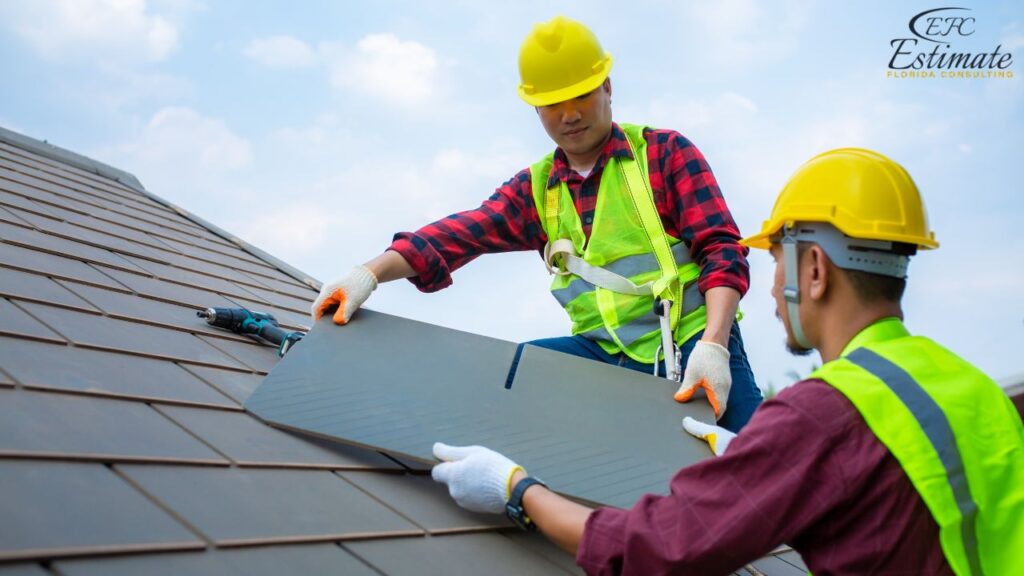
Type of Tile
There are various types of roofing tiles available, including clay, concrete, and slate. Each type of tile has its own price range and characteristics:
- Clay Tiles: Known for their durability and classic appearance, clay tiles are more expensive but offer a long lifespan and excellent weather resistance. They are ideal for homeowners looking for a traditional and timeless look that adds charm to their home. Clay tiles are also resistant to fire, pests, and rot, making them a durable choice in various climates.
- Concrete Tiles: Generally less expensive than clay, concrete tiles are durable and come in a variety of styles and colors. They are heavier than clay tiles and require a strong roof structure. Concrete tiles are versatile and can mimic the appearance of other roofing materials, offering a cost-effective alternative that still provides aesthetic appeal. Additionally, concrete tiles are known for their resistance to harsh weather conditions and their long lifespan.
- Slate Tiles: Among the most expensive roofing materials, slate tiles offer unparalleled durability and a luxurious look. They are also the heaviest option and require specialized installation. Slate tiles are often chosen for high-end homes due to their sophisticated appearance and longevity, making them a premium choice for homeowners seeking the best quality. Slate tiles are extremely durable, fire-resistant, and can last for over a century with proper maintenance.
The choice of tile will significantly impact the overall cost of the roof replacement project. Homeowners should consider the aesthetic appeal, durability, and maintenance requirements of each tile type. Additionally, the choice of tile can affect the overall weight and structural requirements of the roof, which might necessitate additional reinforcement and thus increase the cost.
Labor Costs
Labor costs for replacing a tile roof can vary based on the complexity of the job and local labor rates. Experienced roofing contractors may charge higher rates, but they offer quality workmanship and efficiency. Additionally, the removal of the old roof, preparation of the roof deck, and installation of the new tiles all contribute to the labor costs. Proper installation is crucial for the roof’s performance and longevity, making it essential to hire skilled professionals. Homeowners should obtain multiple quotes to compare prices and services. Labor costs also include ensuring that all safety protocols are followed, which can impact the overall cost.
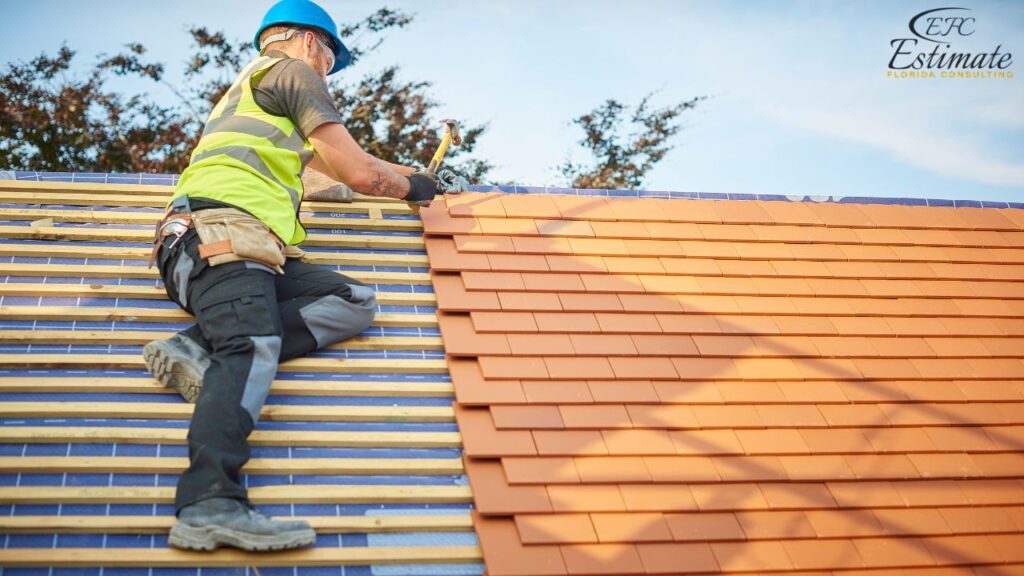
Hiring reputable contractors ensures that the job is done correctly the first time, reducing the likelihood of costly repairs in the future.
Roof Deck Condition
The condition of the roof deck is another important factor. If the roof deck is in poor condition and requires repairs or replacement, this will add to the overall cost. Ensuring a solid and stable roof deck is crucial for the longevity and performance of the new tile roof. Addressing issues such as rot, water damage, or structural weaknesses before installing the new tiles can prevent future problems and ensure a durable roof. Proper inspection of the roof deck before starting the project can help identify any necessary repairs and prepare an accurate budget. A thorough assessment can also uncover potential issues that could cause significant damage if not addressed promptly.
Additional Features and Upgrades
Additional features such as underlayment, flashing, ridge caps, and ventilation systems can increase the cost of the roof replacement. These components are essential for ensuring the roof’s functionality, weather resistance, and energy efficiency. Upgrading to premium underlayment or adding advanced ventilation systems can enhance the roof’s performance but will also add to the cost. Proper ventilation helps regulate attic temperatures and prevents moisture buildup, which can extend the life of the roof and improve indoor air quality. Including these features in the initial planning stages ensures a comprehensive approach to roof replacement. Investing in these upgrades can provide long-term benefits such as reduced energy costs and improved home comfort.
Benefits of Replacing a Tile Roof
Durability and Longevity
Tile roofs are known for their exceptional durability and longevity. When properly installed and maintained, a tile roof can last for 50 to 100 years or more. This long lifespan makes tile roofs a cost-effective investment over time, as they require fewer replacements compared to other roofing materials. The durability of tile roofs also translates into lower maintenance costs and fewer repair expenses over the years. This longevity provides peace of mind to homeowners, knowing their investment will last for decades.
Download Template For Roofing Project Breakdown
- Materials list updated to the zip code
- Fast delivery
- Data base of general contractors and sub-contractors
- Local estimators

Aesthetic Appeal
Tile roofs offer a classic and elegant appearance that can enhance the overall curb appeal of a home. With a wide range of colors, styles, and textures available, homeowners can choose a tile that complements their architectural style and personal preferences. The aesthetic appeal of tile roofs can also increase the property value and attract potential buyers. The timeless look of tile roofs can suit various architectural designs, from Mediterranean to contemporary. This versatility allows homeowners to create a unique and appealing exterior that stands out in the neighborhood.
Energy Efficiency
Tile roofs provide excellent insulation, helping to maintain a stable indoor temperature and reduce energy costs. The natural thermal properties of tile help to keep homes cooler in the summer and warmer in the winter, reducing the need for heating and cooling. Additionally, some tile options, such as those with reflective coatings, can further enhance energy efficiency. Improved energy efficiency not only reduces utility bills but also contributes to a more comfortable living environment. This energy efficiency can lead to significant savings over the life of the roof, making it a smart financial choice.
Low Maintenance
Tile roofs require minimal maintenance compared to other roofing materials. Regular inspections and occasional cleaning are usually sufficient to keep the roof in good condition. Unlike asphalt shingles, tile roofs are resistant to rot, mold, and insect damage. The low maintenance requirements of tile roofs translate into long-term savings on upkeep and repairs. This reduced need for maintenance allows homeowners to focus on other aspects of homeownership without worrying about frequent roof repairs.
Considerations Before Replacing a Tile Roof
Roof Structure
The weight of tile roofs is significantly greater than that of other roofing materials. Before replacing a roof with tiles, it is essential to ensure that the existing roof structure can support the additional weight. If necessary, structural reinforcements may be required, adding to the overall cost. Consulting with a structural engineer can help determine if any modifications are needed to safely support a tile roof. Ensuring the roof structure can handle the weight of the tiles is crucial for the roof’s longevity and safety.
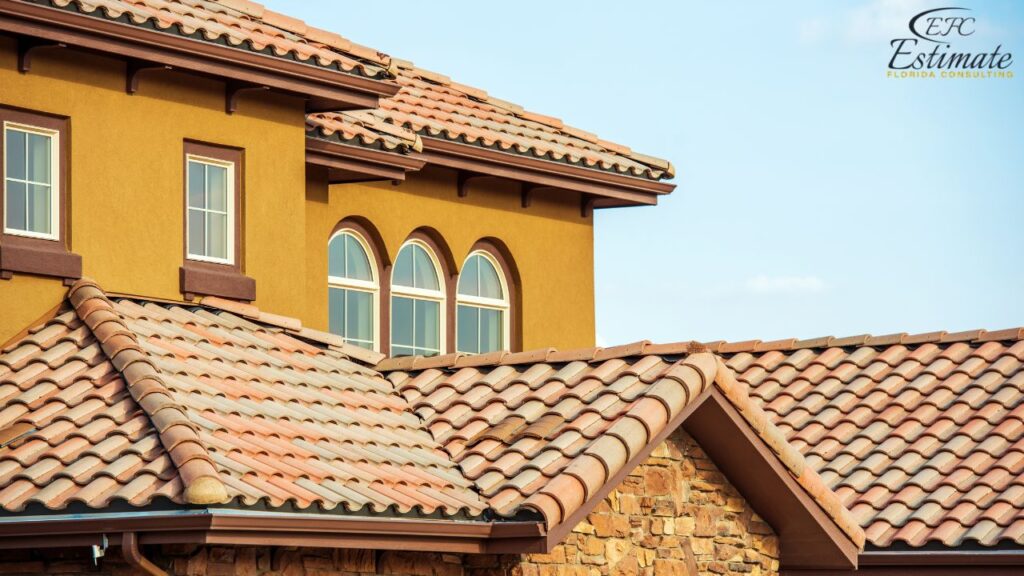
Weather Conditions
Tile roofs are well-suited for various weather conditions, including extreme heat, heavy rain, and strong winds. However, in regions prone to freeze-thaw cycles, special considerations may be needed to prevent tiles from cracking. Understanding the local climate helps ensure that the chosen tile type and installation method will provide optimal performance and longevity. Choosing tiles that are appropriate for the local weather conditions can enhance the roof’s durability and reduce the risk of weather-related damage.
Contractor Selection
Choosing the right contractor is crucial for a successful tile roof replacement. Homeowners should seek contractors with experience in tile roofing, positive reviews, and proper licensing and insurance. Obtaining multiple quotes and discussing the project in detail with potential contractors can help ensure that the best professional is selected for the job. A reputable contractor will also provide a detailed contract outlining the scope of work, timeline, and payment terms. Selecting a qualified contractor ensures the project is completed to high standards, minimizing the risk of issues during and after installation.
Project Timeline
Replacing a tile roof is a significant project that requires careful planning and coordination. Homeowners should plan for a project timeline that accommodates the removal of the old roof, preparation of the roof deck, and installation of the new tiles. Discussing the timeline with the contractor and understanding the steps involved can help set realistic expectations for project completion. Planning the project during favorable weather conditions can also help avoid delays and ensure a smooth application process. A well-planned timeline ensures the project stays on track and is completed efficiently.
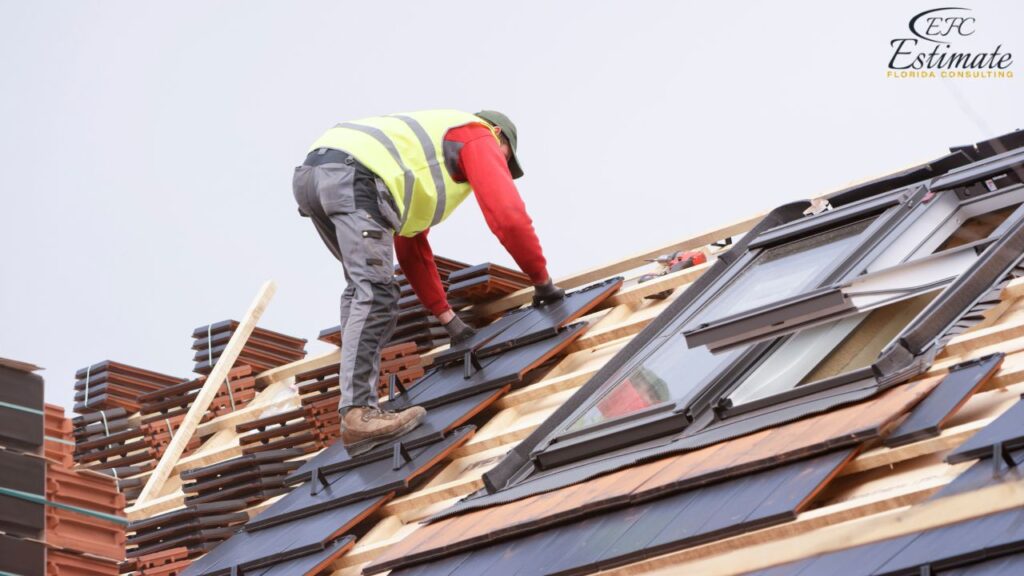
Maintenance Tips for Tile Roofs
Regular Inspections
Regularly inspecting the tile roof for cracked or broken tiles, loose tiles, and other signs of damage can help catch issues early and prevent more extensive repairs. Small cracks can be repaired easily, but ignoring them can lead to more significant problems over time. Seasonal inspections, especially after harsh weather conditions, are recommended to maintain the stucco’s integrity. Addressing minor issues promptly can prevent water infiltration and other damage that can compromise the roof’s performance.
Cleaning
Tile roofs can be cleaned with a gentle power wash or a soft-bristle brush and mild detergent. Regular cleaning helps remove dirt, mold, and mildew, keeping the tiles looking fresh and preventing the buildup of harmful substances. It is important to use the appropriate cleaning methods to avoid damaging the tile surface. Cleaning also helps maintain the roof’s color and appearance, enhancing the home’s curb appeal. Regular maintenance ensures the roof remains in optimal condition, extending its lifespan.
Repairs
Timely repairs are essential for maintaining the longevity of a tile roof. Addressing small cracks and chips as soon as they appear can prevent them from spreading and causing more extensive damage. Using the correct materials and techniques for repairs ensures that the tiles remain durable and effective. Professional repair services can provide high-quality results, restoring the roof’s appearance and functionality. Regular maintenance and prompt repairs help preserve the roof’s integrity and performance.
Enhancing the Tile Roof Finish
Adding Color
Tile roofs can be tinted in a variety of colors, allowing homeowners to achieve a customized look that complements their home’s design. Adding color to tiles enhances their aesthetic appeal and eliminates the need for painting. Tinting the tiles ensures consistent color throughout the material, providing a long-lasting and vibrant finish. Customizing the roof color can enhance the home’s curb appeal and make it stand out.
Texturing Options
Tile offers various texturing options, from smooth finishes to rough, textured surfaces. Homeowners can choose a texture that suits their architectural style and personal preferences. Different textures can add depth and character to the home’s exterior, creating a unique and appealing look. Consulting with the contractor about the available texturing options can help achieve the desired finish. Textured tiles can add visual interest and sophistication to the roof.
Get 5 New Leads Next 7 Days With Our System
- Multi-Family House
- Single-Faimly House
- Modern House
- Duplex
- Ranch House
- Bungalow
Decorative Elements
Incorporating decorative elements such as trim, moldings, and architectural details can enhance the visual appeal of a tile roof. These elements can be customized to match the home’s design, adding elegance and sophistication. Decorative elements also provide opportunities to showcase craftsmanship and attention to detail, elevating the overall appearance of the home. Adding these features can significantly enhance the roof’s aesthetic appeal and complement the overall design of the house.
Conclusion
Replacing a tile roof on a 1,500 square foot house is a substantial investment that offers numerous benefits, including durability, energy efficiency, and aesthetic appeal. By understanding the various costs involved, homeowners can make informed decisions and budget effectively for their roofing project. Proper planning, quality materials, and skilled labor ensure a successful tile roof replacement that enhances the home’s value and appearance for many years to come. Investing in a tile roof not only improves the home’s exterior but also contributes to long-term savings through reduced maintenance and energy costs. Homeowners should carefully consider their options and work with experienced professionals to achieve the best results for their tile roof project.
FAQs
Replacing a tile roof on a 1,500 square foot house typically costs between $37,125 and $74,250, averaging $25 to $50 per square foot. This includes materials, labor, removal of the old roof, and necessary permits.
The cost can vary based on the type and quality of tile, the complexity of the roof design, and local labor rates. High-end tiles and intricate installations can increase the total cost. Additional expenses may arise from structural repairs, insulation, and underlayment.
- Clay Tiles: $8 – $15 per square foot, totaling $12,000 – $22,500 for 1,500 square feet.
- Concrete Tiles: $6 – $12 per square foot, totaling $9,000 – $18,000 for 1,500 square feet.
- Slate Tiles: $15 – $30 per square foot, totaling $22,500 – $45,000 for 1,500 square feet.
Labor costs can vary significantly, including:
- Removal of Old Roof: $1.50 – $3.00 per square foot, totaling $2,250 – $4,500.
- Roof Deck Preparation: $1.00 – $2.00 per square foot, totaling $1,500 – $3,000.
- Tile Installation: $4.00 – $8.00 per square foot, totaling $6,000 – $12,000.
Additional components include:
- Underlayment: $0.50 – $1.00 per square foot, totaling $750 – $1,500.
- Flashing: $0.75 – $1.50 per square foot, totaling $1,125 – $2,250.
- Ridge Caps: $1.00 – $2.00 per square foot, totaling $1,500 – $3,000.
- Ventilation Systems: $1.00 – $2.00 per square foot, totaling $1,500 – $3,000.
The size and complexity of the roof are primary factors. Complex roof designs with multiple angles, dormers, and valleys will require more labor and materials, increasing the overall cost. The roof’s accessibility and height can also affect labor costs.
Google Reviews



Process To Get Tile Roof Cost Estimate Report
Here I am going to share some steps to get tile roof cost estimate report.
-
You need to send your plan to us.
You can send us your plan on info@estimatorflorida.com
-
You receive a quote for your project.
Before starting your project, we send you a quote for your service. That quote will have detailed information about your project. Here you will get information about the size, difficulty, complexity and bid date when determining pricing.
-
Get Estimate Report
Our team will takeoff and estimate your project. When we deliver you’ll receive a PDF and an Excel file of your estimate. We can also offer construction lead generation services for the jobs you’d like to pursue further.

